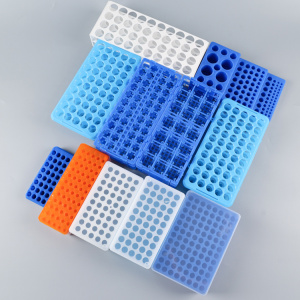What can be used for centrifugation in the 8 Strip PCR Tubes centrifuge?
The 8 Strip PCR Tubes centrifuge is a machine that uses centrifugal force to separate liquids and solid particles, or each component of a mixture of liquids and liquids. The PCR 8 Strip Tubes centrifuge is mainly used to separate solid particles from liquids in suspension, or to separate liquids in two emulsions with different and incompatible densities. So what are the common centrifugation methods of the ei8 Strip PCR Tubes centrifuge?

2, regional centrifugation method: which can be divided into two kinds of velocity zone centrifugation and equal density velocity zone centrifugation.
(1) velocity zone centrifugation method: For a small amount of suspension, a small density gradient is generated, which is used to stabilize the particle settling. The particles are removed from the initial zone due to centrifugal action. The speed of movement depends on the size and shape of the particles, as well as the centrifugal force they are subjected to in a laboratory octuplet centrifuge. After a certain time of centrifugation, the various flakes move and separate according to their relative velocities, forming a series of zones. In this way, we can reduce the difference in settling velocity to 20% or more of the particles.
(2) Isobaric zone centrifugation: A suspension of the particles to be separated is placed in a density gradient solution or the particles are actually dissolved in the gradient solution. After centrifugation, these particles either float or drop down to a liquid of the same density as themselves. They have no weight here. No matter how long they are centrifuged, they do not move. These particles can become a series of regions, each in its own region of density. Thus, it is a technique that uses floating density particle size to separate particle sizes. The media used are usually cesium chloride (Cscl) and cesium sulfate (Cs2SO4). The former is suitable for DNA extraction and the latter for RNA extraction. A major disadvantage of this method compared to velocity zone centrifugation is that during centrifugation, the particles are inevitably exposed to solutions with high concentration gradients, which can cause localized damage to the particles and possibly damage to the particles.
——



